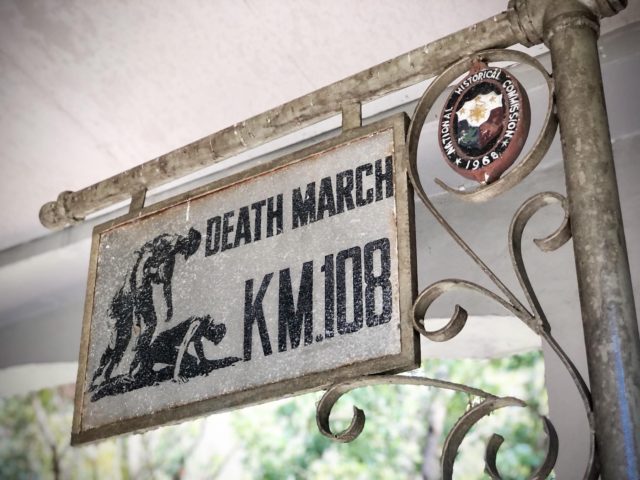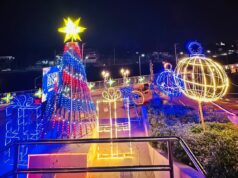Department of Tourism (DOT) Central Luzon is adding a new tourism circuit in its arsenal through the development of the World War II historical tour.
It narrates the story of hardships and sacrifices of the thousands prisoners of war in their forcible transfer from Bataan to Tarlac, known in the country’s history as the infamous Death March.
DOT Regional Director Carolina Uy underscored that the historical tour is a unique tourism product highlighting the monumental landmarks of Central Luzon that helped shape the region’s history during the Japanese occupation.
“We boast of our diverse tourism offerings that cover nature, leisure, culture and heritage, and a lot more…This project was born out of the DOT Region III and the provinces of Tarlac, Pampanga, and Bataan,” she said.
Uy shared that the circuit offers the tourists with a more realistic picture of what history was, and what was the country’s role in one of the world’s biggest wars.
“By developing this new product, we intend to create experiential marketing moments which offer true immersion into an experience. By combining immersive experience with savvy social media marketing, we market our regions, not just our attractions,” she added.
The director emphasized that the tourism circuit features significant sites and historical landmarks with rich fascinating stories of heroism and gallantry found in the three provinces.
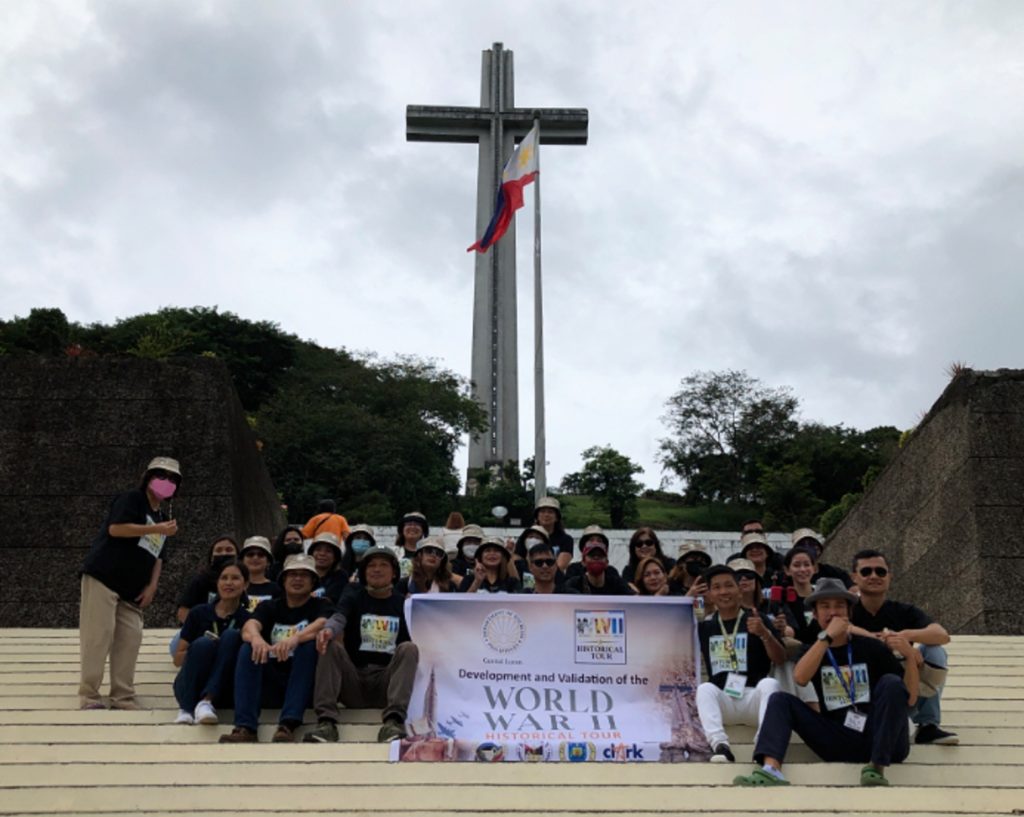
Bataan’s Shrine of Valor
The first destination of the World War II historical tour is the Shrine of Valor located near the summit of Mount Samat in the municipality of Pilar in Bataan.
The shrine is a white memorial cross which stands as a remembrance to the soldiers who lost their lives during the battle.
It also includes a museum with a display of paintings of the country’s heroes, and weapons and equipment used by Filipino, American and Japanese forces.
Shrine of Valor operations head Rizaldy Mamuad narrated that after a three-month battle against the Japanese Imperial Army in 1942, the combined Filipino and American forces surrendered in the mountain.
“I am forever honoring the sacrifices and gallantry of our World War II heroes. I want to tell our visitors that what they visited here is not a park. This is a shrine – the last bastion of the United States army forces in the far east who fought during World War II,” he pressed.
Mamuad added that after the fall of Bataan, about 70,000 Filipino and American prisoners of war (POWs) were forced to make a 65-mile march from two points in Bataan: from Mariveles on April 10, and from Bagac on April 11 going to Camp O’Donnell in Tarlac.
The World War II historical tour features the 0 kilometer and 00 kilometer Death March Markers presently erected in the said towns.
It also passes through the Flaming Sword in Pilar where the marching prisoners merged; the St. Joseph Cathedral in Balanga City which was used by the Japanese as a site for artillery bombardment; and the First Line of Defense marker in Dinalupihan which marks the first strong line of defense of the combined Filipino and American troops.
Mamuad narrated that the already battle-weary prisoners trekked North with exhaustion and thousands died along the way while many were ill and feverish.
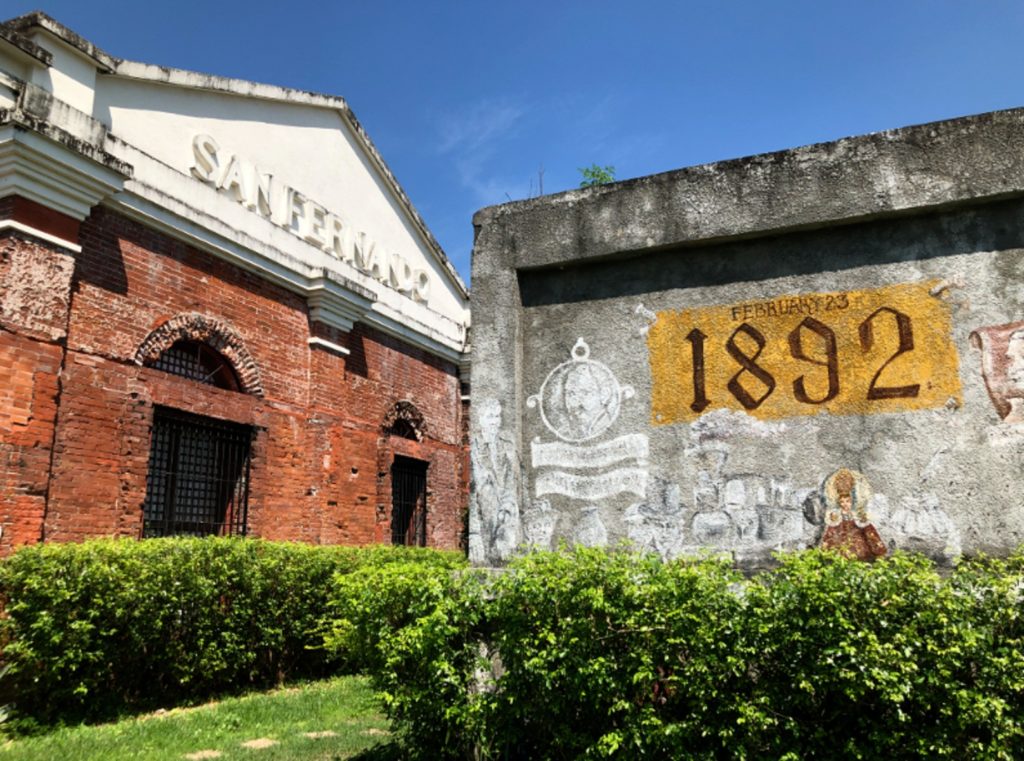
Pampanga’s Train Station
From the province of Bataan, the historical circuit moves through the province of Pampanga which also played a significant role in the second World War.
Upon reaching the City of San Fernando train station, the death march became a death ride by cargo train.
DOT-accredited tour guide James Allen Santiago shared that after a 102-kilometer march from Bataan, the POWs were packed densely into hot, metal box cars and many of them died from suffocation.
“Each box car can only fit about 40 persons, but the Japanese forced to fit about a hundred soldiers and stuffed them like sardines in these boxes,” he narrated.
The historical circuit also passes through World War II houses in the said city, going to the Museo ning Angeles located in the highly urbanized Angeles City.
Found in the said museum is an artwork entitled Death March Food Throwers in Action, which shows folks on the roadside risking their lives by slipping food and drink to the death marchers.
The museum curator said the people threw rice, biscuits, fruits, sugarcane, drinking water in used catsup bottles, and other food items to the sick and weary soldiers.
Said artwork is made by a resident named Daniel Dizon who at 11 years old joined other locals in throwing anything to eat to the POWs inside passing prison trains and trucks and saving them from starvation during the march.
“It is saddening that our heroes experienced one of the most dreadful events in the history of the Philippines during World War II which is the Death March. Indeed, many have sacrificed their lives for the freedom of the people and our country,” Santiago pressed.
The tour also passes through historical places found inside Clark Freeport Zone including the parade grounds, Fort Stotsenberg welcome column, historical buildings, barn houses, Bicentennial Park, Kelley’s theater, K9 cemetery, Kamikaze west airfield, and the Clark International Airport.
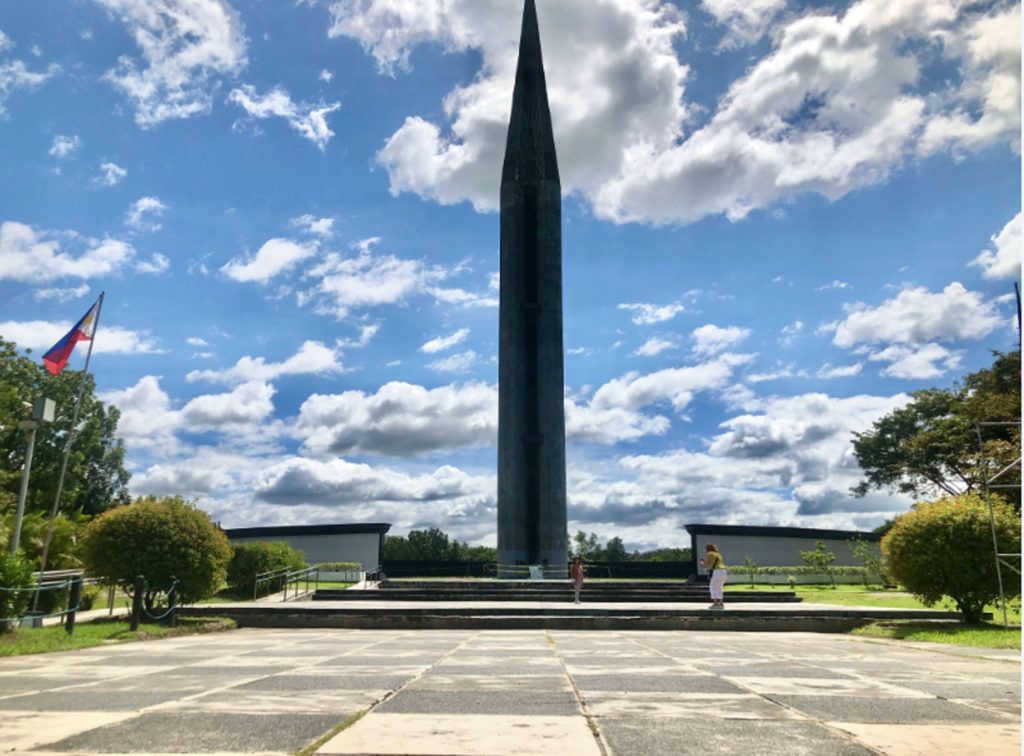
Tarlac’s National Shrine
Passing over the province of Pampanga, the tourism circuit moves towards the province of Tarlac, a place that is said to be the witness of the remnants of World War II.
Its first stop highlights the World War II Museum found in Bamban town which is home to an extensive collection of artifacts and relics retrieved directly in battlefields during the war.
Historian and museum owner Rhonie Dela Cruz shared that displayed in the museum are some personal collections of the war veterans including those donated by the American soldiers or owned by Aeta Negritos who are considered the unknown true Filipino freedom fighters.
“It tells a story of the Filipinos, especially the Aetas’ role in World War II, the Americans, and also the Japanese side of the story. So it’s quite unique from other museums because it offers a complete story of the second World War based on history,” he said.
The historian affirmed his support for the new tourism circuit, saying this would provide a complete perspective on what World War II really was, considering that every Filipino has the blood of a veteran.
Upon arrival at the Sto. Domingo train station in the town of Capas, the POWs had to walk the last and most agonizing miles of the march: the six kilometers to Camp O’Donnell.
DOT-accredited tour guide Emil Revivis explained that the place has become one of the most hellish of the concentration camps during the war.
“The POWs were herded here that time. Those who died due to hunger, thirst, and hardships of war were interred in this camp,” he stated.
The historical circuit brings the tourists to their last stop at the camp which is known at present as the Capas National Shrine.
It is a 70-meter obelisk structure built by the Philippine government in honor of all the Filipino American soldiers who endured the Death March.
The structure is surrounded by a three-segmented, black marble wall engraved with the names of the Filipinos known to have died during the march.
The shrine now covers a 54-hectare parkland; 35 hectares of which are planted with about 31,000 trees symbolizing the about 25,000 Filipino and 6,000 American POWs who died in the concentration camp.
Presently, there are 138 obelisk markers that follow the path of the march across Bataan, Pampanga, and Tarlac in commemoration of Filipino and American heroism and gallantry.
The World War II historical circuit is seen to bolster Central Luzon’s tourism recovery, and further promote historical places considered as one of the region’s treasures.
DOT-accredited tour guide Salf Carreon emphasized that the tour will help the tourism sector bounce back by enticing tourists with personal connections to the people who participated in the war, those who are learning about the country’s rich history, and history junkies.
“As tour guides, our main objective is to celebrate, honor, and promote the heroism and sacrifices of the Filipino and American soldiers… History shall never be forgotten especially that we can learn from it moving forward,” he said.
The historical tour is also seen to open more opportunities to the tour guides, increase the sales of travel agencies, and open local livelihood opportunities in the region.
“I can see that this tour is worth visiting, worth buying, and worth selling because this tour stirs curiosity in everyone on how the Death March happened, how it started, and how it ended,” he added.
Present during the validation of the tour is the DOT, tour guides, and travel agency owners in the region who are working hand in hand for the tour’s development as it will soon be opened within the year. (MJSC/JLDC-PIA 3)


